
《保险研究》20240105-《终身收支视角下长期护理保险的再分配效应——基于性别和参保类型的考察》(肖颖、朱勤)
[中图分类号]F840.61 [文献标识码]A [文章编号]1004-3306(2024)01-0059-13 DOI:10.13497/j.cnki.is.2024.01.005
资源价格:30积分
- 内容介绍
[摘 要]互助共济是社会保障制度的本质特征,考察其再分配效应是评价一项社会保障制度互助共济功能的有效方法之一。本文从终身收支的视角出发,构建了健康保险精算模型,测算不同性别和参保类型群体的缴费回报率,以比较长期护理保险试点城市制度方案的再分配效应。研究结果表明:首先,由于女性失能持续时间更长、工资水平更低,女性参保者的缴费回报率高于男性,从而呈现出“男性补贴女性”的再分配效应。其次,城居保参保者的缴费回报率高于城职保参保者,呈现出“职工补贴居民”的再分配效应;“比例筹资”模式对不同参保类型群体的再分配效应比“定额筹资”模式更强。第三,相比于城职保参保者,60岁城居保参保者的预期余寿更短,但失能持续时间却更长;60岁男性的预期余寿和失能持续时间均比女性更短。本文建议,提高长护险制度统筹层次,推行比例筹资和待遇均等相结合的模式,形成“量能缴费”和“按需保障”的制度特征;同时,探索和发展农村居民更可及的待遇给付方式,以促进群体间的照护保障公平。
[关键词]长期护理保险;健康保险精算模型;缴费回报率;再分配效应
[基金项目]本文受到国家社科基金重大项目(21&ZD189)和教育部社科重大课题攻关项目(20JZD031)资助。
[作者简介]肖颖,复旦大学社会发展与公共政策学院、复旦大学老龄研究院博士研究生;朱勤(通讯作者),复旦大学社会发展与公共政策学院、复旦大学老龄研究院教授、博士生导师。
The Redistribution Effects of the Social Long-Term Care Insurance from a Lifetime Income and Expenditure Perspective:An Analysis by Gender and Insurance Type
XIAO Ying,ZHU Qin
Abstract:Mutual aid is an essential feature of the social security system,and examining the redistribution effect is one of the effective ways to evaluate the mutual aid function of a social security policy.In order to compare the redistribution effect of the long-term care programs (LTC) of pilot cities,the article constructs a health insurance actuarial model from the lifetime income and expenditure perspective,and measures the return on contribution(ROC) for enrollees of different genders and insurance types.The conclusions are as follows.Firstly,due to longer disability duration and lower wages,the ROC for women is higher than that for men,thus exhibiting the redistribution effect of "males subsidizing females".Secondly,the ROC for Urban Resident Basic Medical Insurance (URBMI) enrollees is higher than that for Urban Employee Basic Medical Insurance (UEBMI) enrollees,showing the redistribution effect of "UEBMI enrollees subsidizing URBMI enrollees".Meanwhile,the redistribution effect is greater in the pilot cities adopting fixed proportion financing than cities adopting the fixed quota funding mode.Thirdly,compared with UEBMI enrollees,60-year-old URBMI enrollees have a shorter life expectancy but longer disability duration;compared with women,60-year-old men have shorter life expectancy and shorter disability duration.The article suggests to lift the pooling level of the LTCI system and implement a model combining proportional financing and equal benefits,thus cultivating a policy featured with “capability-based contribution” and “protection catered to needs”.Furthermore,the paper suggests to explore accessible payment methods for rural residents,so as to promote equity in care protection among groups.
Key words:social long-term care insurance;actuarial model of health insurance;return on contribution;redistribution effect
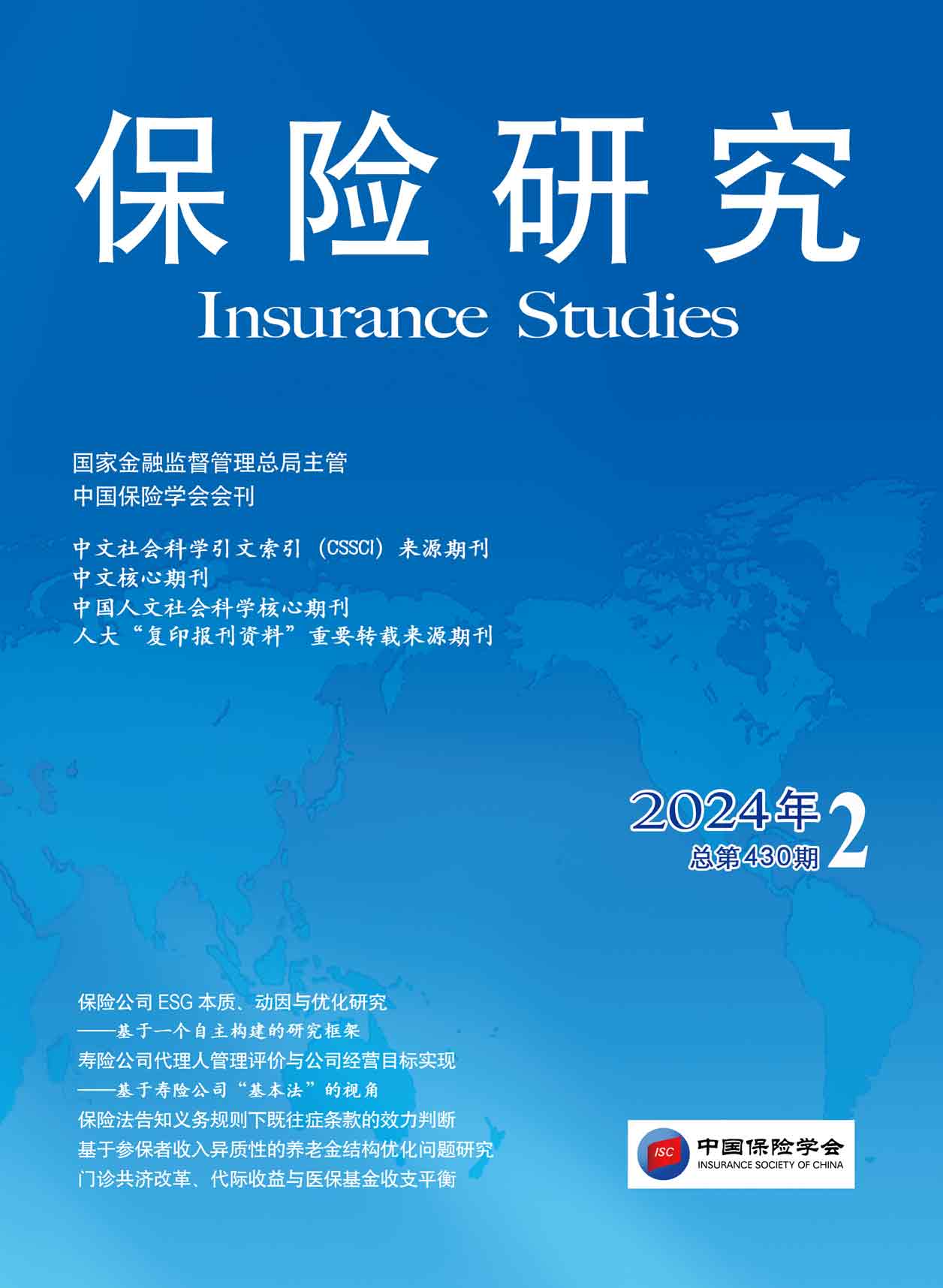
《保险研究》20240201-《保险公司ESG本质、动因与优化研究——基于一个自主构建的研究框架》(郝臣、李维安、董迎秋、马贵军)
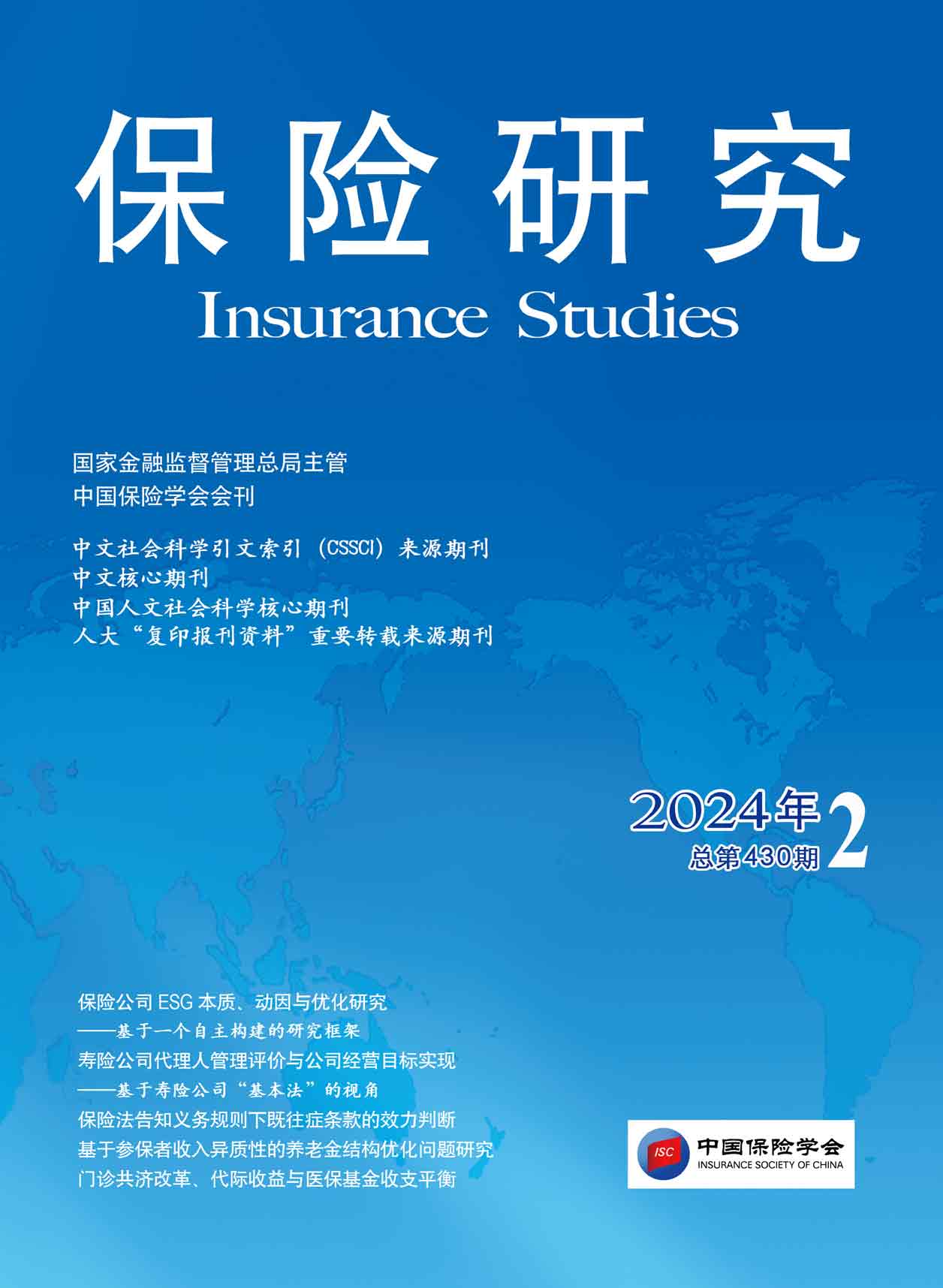
《保险研究》20240202-《资管新规缓解保险企业投资扭曲了吗?》(王桂虎、侯懿芮、郭金龙)
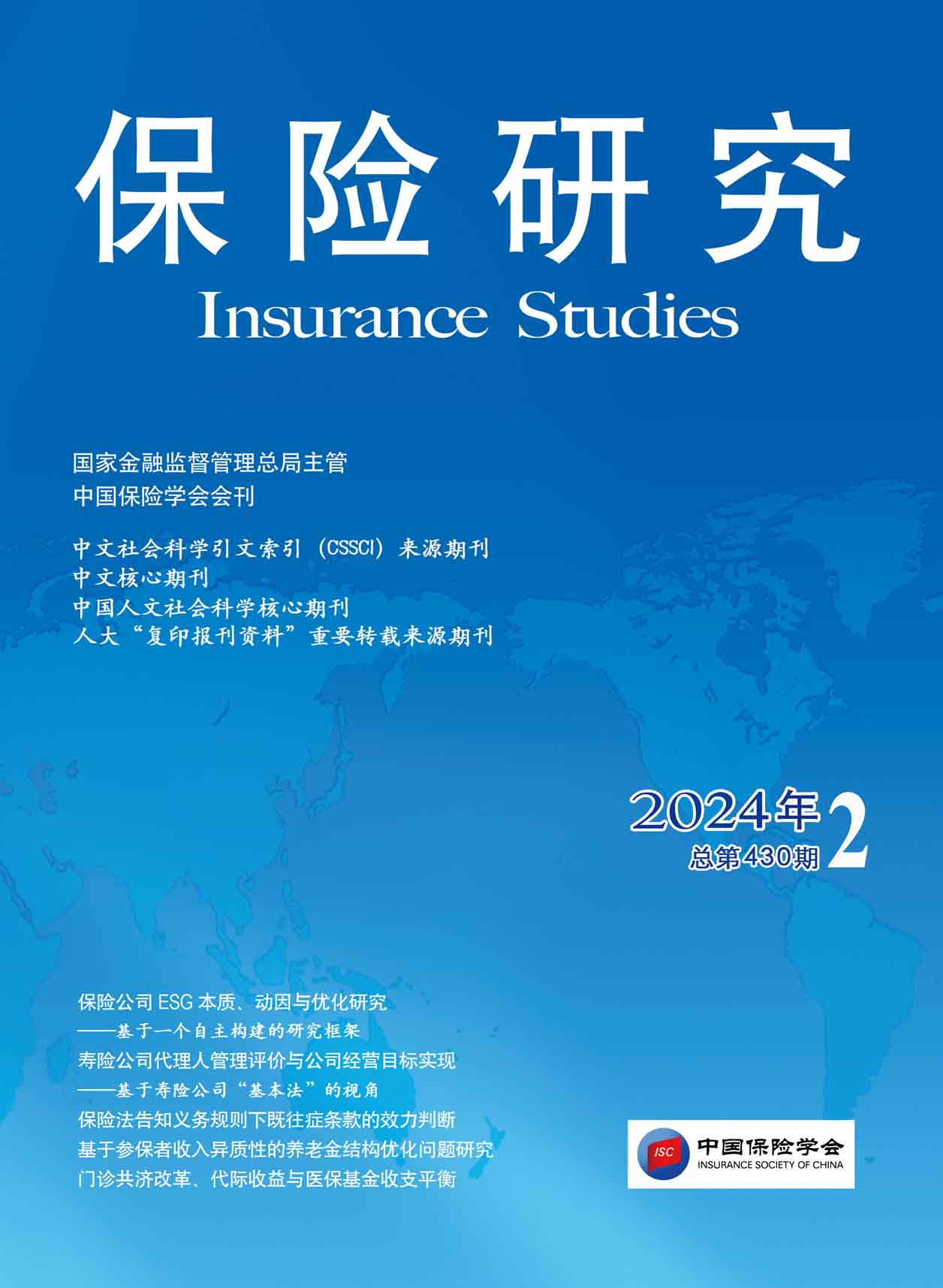
《保险研究》20240203-《寿险公司代理人管理评价与公司经营目标实现——基于寿险公司“基本法”的视角》(罗婧文、许闲)
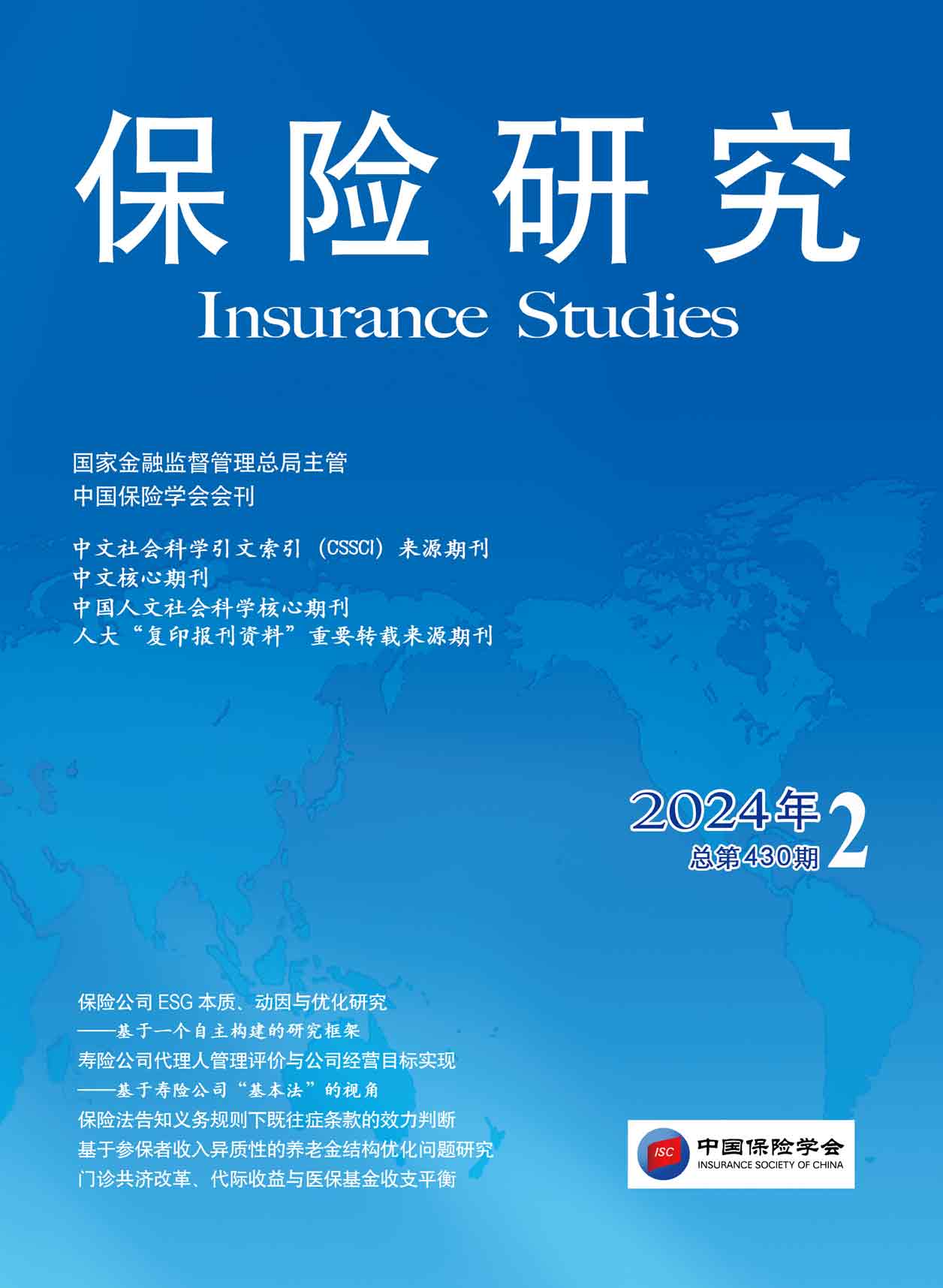
《保险研究》20240204-《数字经济对保险发展的影响研究——基于中介效能视角》(张宁、柳开)
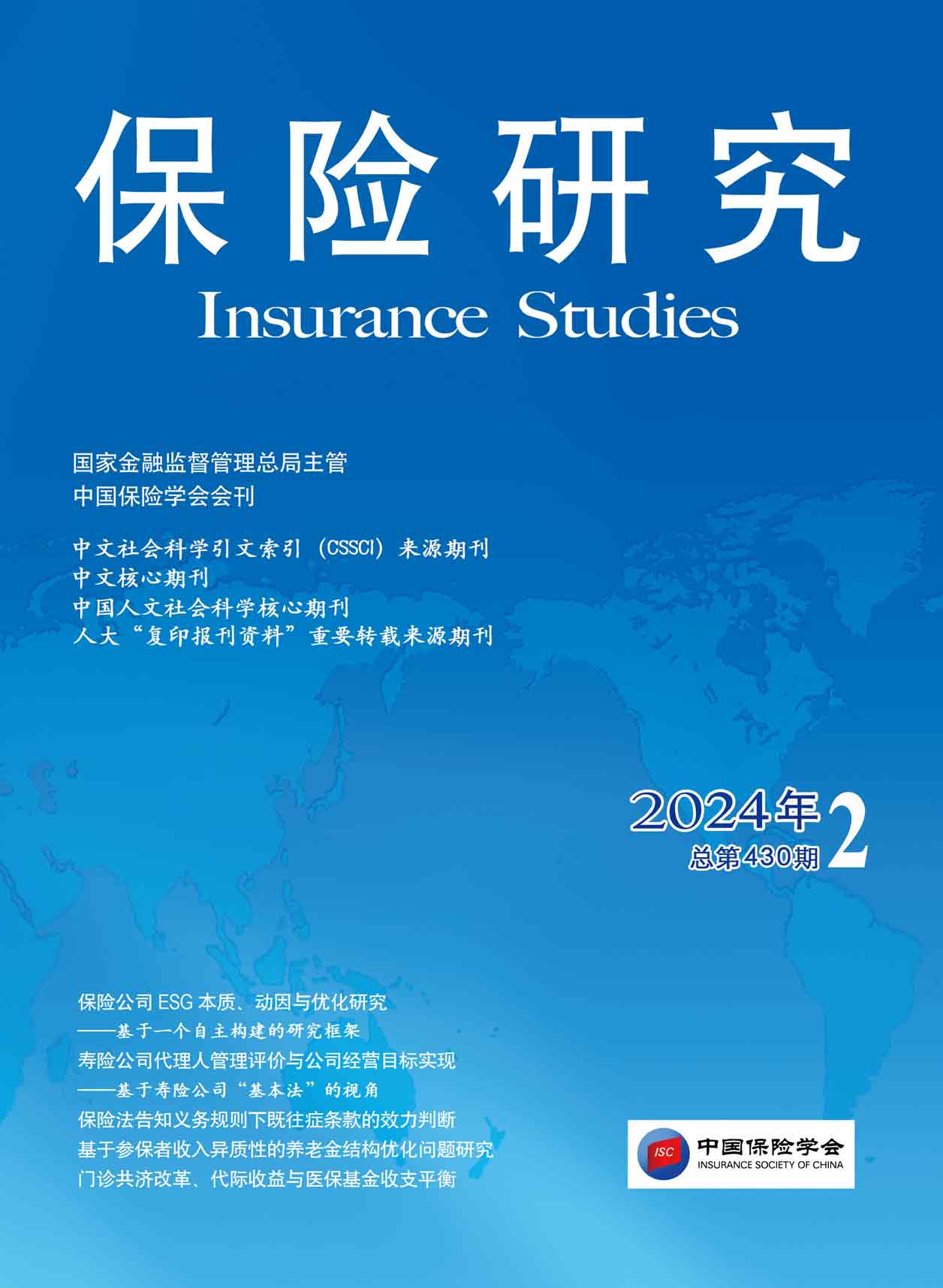
《保险研究》20240205-《重述社会保险和商业保险关系的历史渊源与发展脉络——基于法律文本的考察》(胡鑫磊)
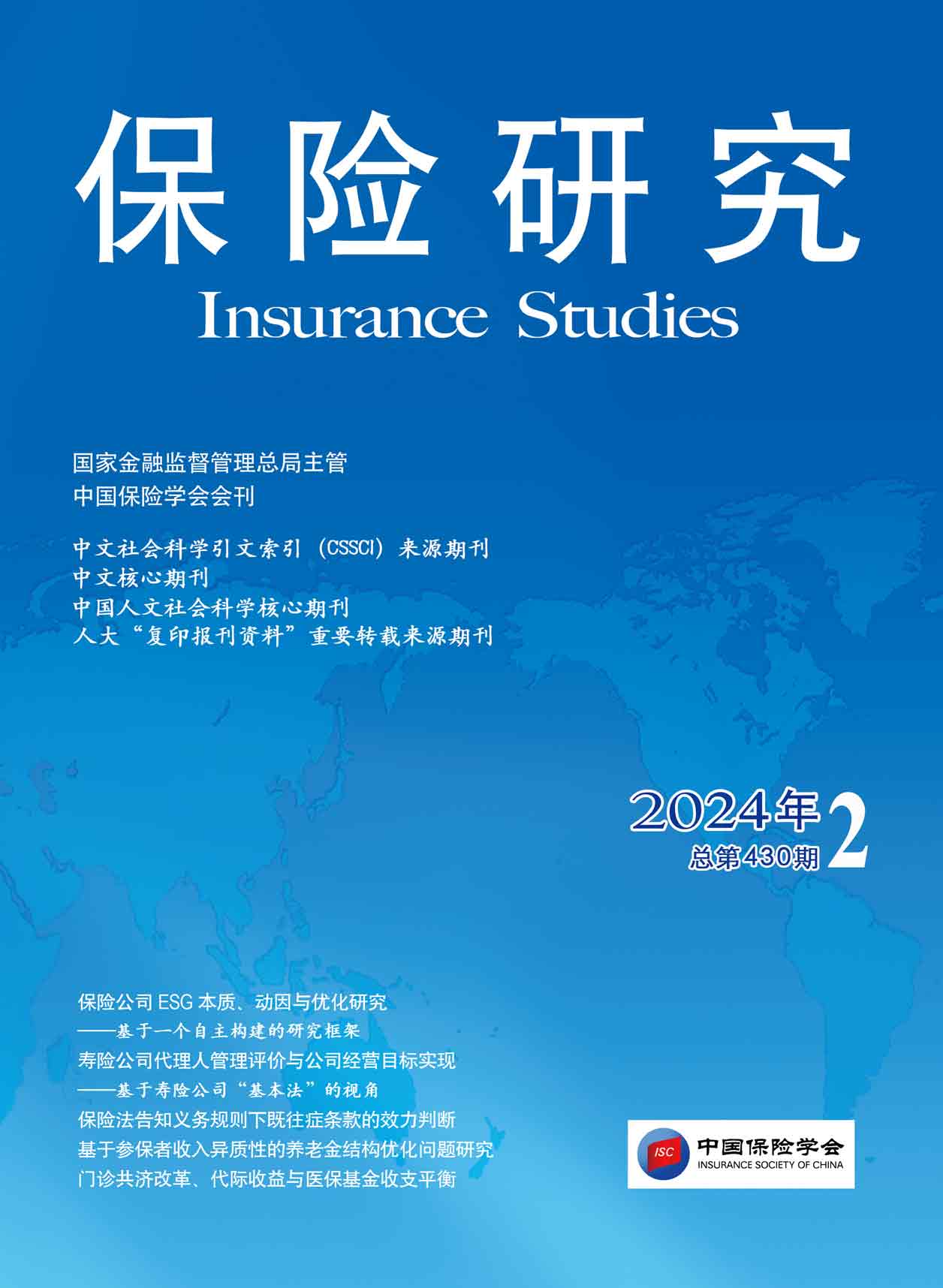
《保险研究》20240206-《保险法告知义务规则下既往症条款的效力判断》(王家骏)
